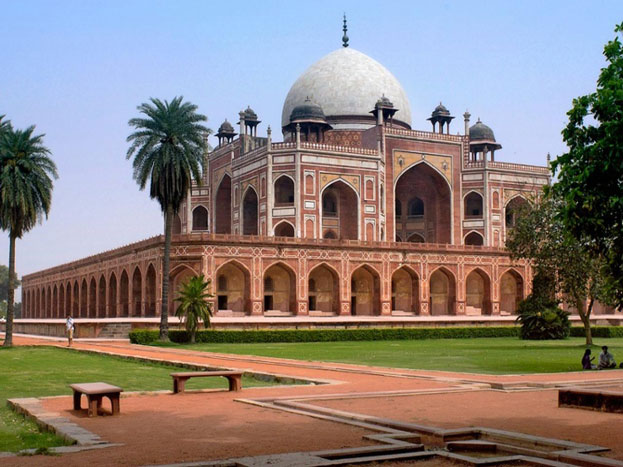Humayun's Tomb India
Humayun's Tomb, built in 1570, is of particular cultural significance as it was the first garden-tomb on the Indian subcontinent. It inspired several major architectural innovations, culminating in the construction of the Taj Mahal. Exemplifying the formative stage of the Mughal structural style, Humayun's Tomb stands as a landmark in the development of Mughal architecture, and also represents the earliest extant specimen of the Mughal scheme of the garden tomb, with causeways and channels. It is a well-developed specimen of the double-domed elevation with kiosks on a grand scale. This building tradition culminated in the Taj Mahal, constructed a century later. Despite being the first standardized example of this style, Humayun's Tomb is an architectural achievement of the highest order.

Continent: Asia
Country: India
Category: Cultural
Criterion: (II)(IV)
Date of Inscription: 2011
The Tomb of Humayun
The tomb of Humayun, second Mughal Emperor of India, was built by his widow, Biga Begum (Hajji Begum), in 1569-70, 14 years after his death, at a cost of 1.5 million rupees. The architect was Mirak Mirza Ghiyath. It was later used for the burial of various members of the ruling family and contains some 150 graves. It has aptly been described as the necropolis of the Mughal dynasty.
The tomb itself is in the centre of a large garden, laid out in char baah (four-fold) style, with pools joined by channels. The main entrance is on the south side, and there is another entrance on the west side. A pavilion and a bath are located in the centre of the eastern and northern walls respectively. The mausoleum itself is on a high, wide, terraced platform with small arched cells along the sides.



